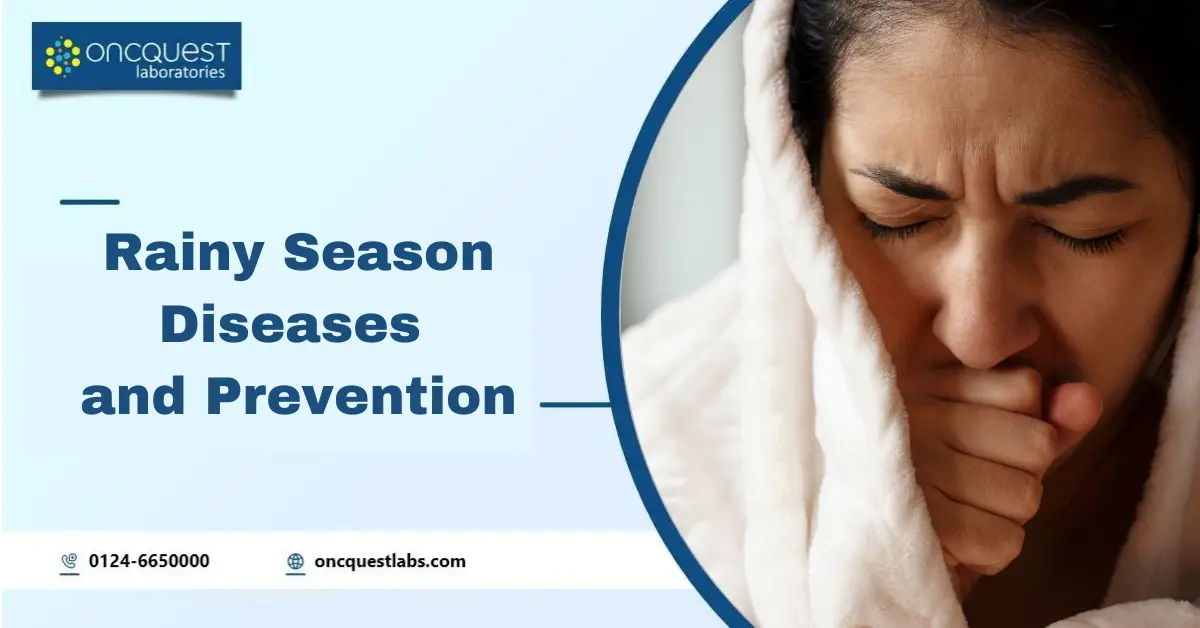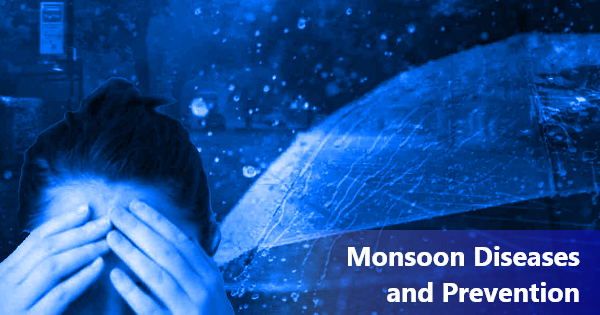India typically experiences annual rainfall from June to September, bringing relief from the intense heat. However, this rainy season also brings with it a heightened risk of various illnesses and infections due to increased exposure to viruses and germs. The combination of higher humidity and stagnant water post-rain creates an ideal environment for microorganisms to thrive. The CBP blood test is often the initial diagnostic step for most monsoon-related diseases. Neglecting these illnesses can lead to increased morbidity, mortality, and community transmission. Maintaining good hygiene, taking preventive measures, seeking early diagnosis, and receiving appropriate treatment are crucial for individual and community health during this period.
Contents
Why do diseases increase in the rainy season?
1. Waterborne Diseases: Heavy rains can lead to contaminated water sources, increasing the risk of waterborne diseases like cholera, typhoid, and leptospirosis.
2. Vector-Borne Diseases: Rainfall creates breeding grounds for mosquitoes and other vectors that transmit diseases like malaria, dengue, and chikungunya.
3. Poor Hygiene: The rainy season can disrupt hygiene practices, such as washing hands and keeping surroundings clean, which can contribute to the spread of infections.
4. Crowded Spaces: During rainy seasons, people often gather in enclosed spaces to avoid rain, leading to increased transmission of respiratory infections like colds and flu.
5. Weakened Immune System: Changes in temperature and humidity during the rainy season can weaken the immune system, making individuals more susceptible to infections.
6. Contaminated Food: Flooding and improper storage of food can lead to contamination, causing foodborne illnesses.
Common Monsoon Diseases and Their Symptoms
| Disease | Cause | Symptoms |
| Dengue | Mosquito bite | High fever, rashes, low platelet count |
| Chikungunya | Mosquito bite from stagnant water | Joint pain, high fever, fatigue |
| Malaria | Mosquito bite from waterlogged areas | Fever, body ache, sweating |
| Cholera | Contaminated food or drink | Diarrhea, low blood pressure, muscle cramps |
| Typhoid | Contaminated food or water | High fever, weakness, abdominal pain |
| Viral Fever | Viral infection | Fever, fatigue, body chills |
| Diarrhea | Consuming unhygienic food/water | Abdominal pain, bloating, vomiting |
| Stomach Flu | Viral gastroenteritis | Diarrhea, vomiting, nausea |
| Influenza | Viral infection | Fever, muscle aches, sore throat |
| Leptospirosis | Contact with contaminated water/mud | Inflammation, chills, muscle discomfort |
How can we prevent disease in rainy season?
- Eat lots of fresh fruits and vegetables to keep your immune system strong.
- Drink plenty of boiled water to stay hydrated.
- Wash your hands regularly and avoid touching your face with dirty hands.
- Clean your surroundings to keep mosquitoes away.
- Use mosquito repellents and wear long sleeves if mosquitoes are a problem.
- Consider getting a typhoid vaccination if you’re going to a place where it’s common.
- Try to avoid crowded places to lower your chances of catching viruses.
Frequently asked Questions
Q1: How can we prevent seasonal diseases?
A1: Preventing seasonal diseases involves maintaining good hygiene habits, such as regular handwashing, staying up to date with vaccinations, and avoiding contact with infected individuals or areas with outbreaks.
Q2: Which of the following diseases are common during rainy season?
A2: During the rainy season, common diseases include waterborne illnesses like cholera, typhoid, and leptospirosis, as well as vector-borne diseases like malaria, dengue, and chikungunya.
Q3: What disease is affected by weather?
A3: Weather can affect respiratory diseases like colds and flu, as they spread more easily in colder temperatures. Additionally, mosquito-borne diseases such as malaria and dengue can be influenced by warm and humid weather conditions.
Q4: What is seasonal diseases?
A4: Seasonal diseases are illnesses that occur more frequently during specific times of the year, such as colds and flu in winter or mosquito-borne diseases like dengue and malaria during the rainy season.
Q5: What are 6 conditions that affect weather?
A5: Six conditions that affect weather are: Temperature: Determines the warmth or coldness of the atmosphere. Humidity: The amount of moisture in the air, influencing how hot or cold we feel. Pressure: High and low-pressure systems affect wind patterns and weather changes. Wind: Movement of air masses that can bring changes in temperature and precipitation. Precipitation: Rain, snow, sleet, or hail that falls from the atmosphere. Cloud Cover: Determines how much sunlight reaches the surface, affecting temperature and weather patterns.
Q6: What are the 5 main effects of climate change?
A6: The five main effects of climate change include rising global temperatures leading to heatwaves and melting ice, changes in precipitation patterns resulting in droughts and floods, sea-level rise threatening coastal areas, increased frequency of extreme weather events like hurricanes and wildfires, and disruptions to ecosystems and wildlife habitats.
Q7: How does the rain affect the weather?
A7: Rain plays a crucial role in weather patterns by cooling down the atmosphere, replenishing water sources, and influencing humidity levels. It can also impact temperature variations and wind patterns, contributing to changes in climate conditions.





